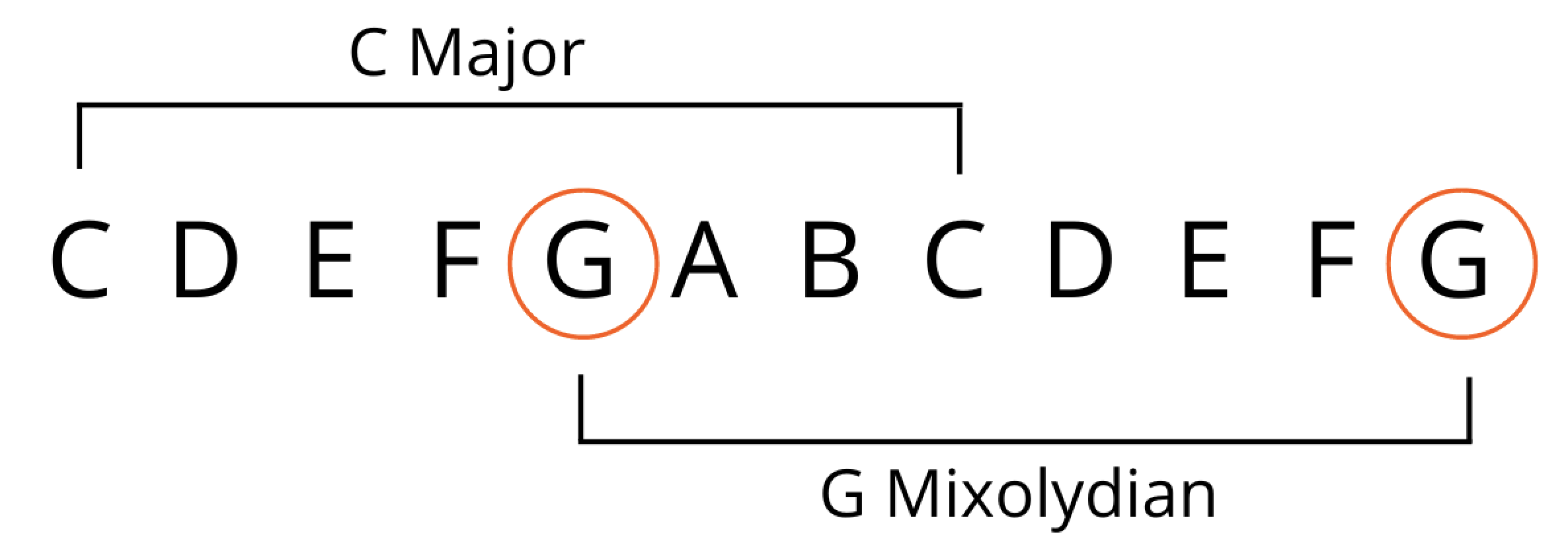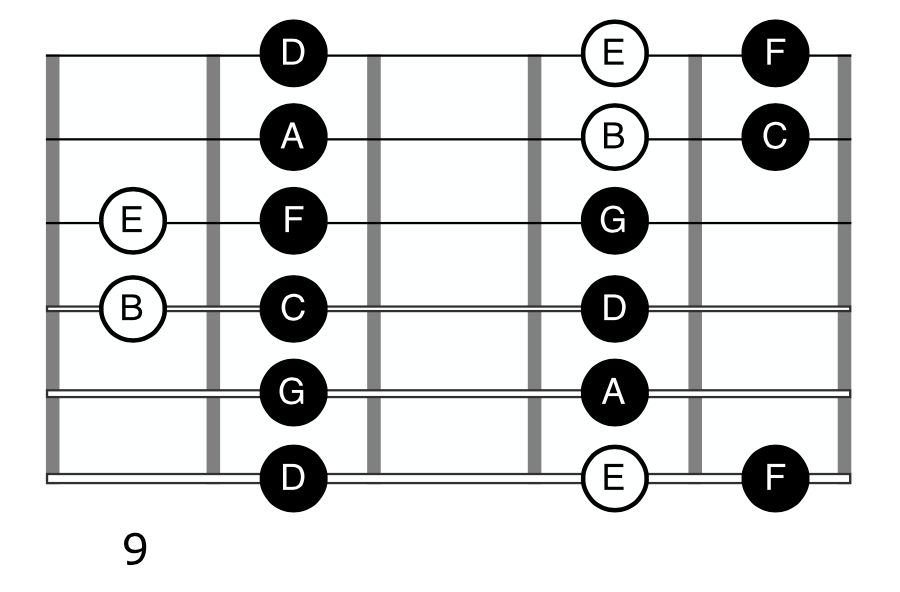3 Ways To Create Music Using The Mixolydian Mode On Guitar
by Simon Candy
 In this video, you learn how to play the mixolydian mode on guitar.
In this video, you learn how to play the mixolydian mode on guitar.
Modes are often misunderstood and hard to understand, however, they don’t need to be.
In this lesson, I’ll simplify the mixolydian mode for you by breaking it down in great detail, showing you several ways you can create music with it on your guitar.
First, you learn the easiest way to access the mixolydian mode.
This is on a single string and helps you understand the mode before looking at other ways to play it.
Once you have this down, you then learn to play the mixolydian mode in the following ways:
• The derivative method: This is when you relate the mode to its parent sale (ie. the scale it is a mode of)
• Pentatonic scale with added notes: This is a great way to integrate all your pentatonic blues and rock licks into the mode
• Triad Shapes: This approach produces a very melodic sound with larger distances between the notes you play compared to a scale
You also learn the chords of the mixolydian mode and how to recognise these in the songs you play.
Many people miss this vital part of playing in any key, the chords!
The understanding of modes begins at the level of chords
Watch the video below to learn more:
The Mixolydian Mode
The Mixolydian mode is the fifth mode of the major scale.
We will be looking at G Mixolydian in this lesson, which is the fifth mode of C Major:

G Mixolydian is a mode of C Major because it has the same notes as C Major.
The important difference is that the root is now G, not C.
You can also think of G Mixolydian as a G major scale with a flat 7:

Mixolydian Mode: Single String
A great place to start with modes is on a single string of your guitar. This way you can easily play the mode and more easily see the relationship between each of the notes:

Mixolydian Mode Approach 1: The Parent Scale
The first way we can access the Mixolydian mode on guitar is via its parent scale, in the case of G Mixolydian this is the C Major scale:

When played over a Mixolydian chord progression, as demonstrated in the video, this scale takes on the role of the Mixolydian mode.
Mixolydian Mode Approach 2: The Pentatonic Scale
Another great way to access the Mixolydian mode is via the pentatonic scale.
Here we have the D minor pentatonic scale with added notes to complete G Mixolydian:

Watch the video to see this approach demonstrated.
Mixolydian Mode Approach 3: Triads
Another great way to access the Mixolyian mode is using triads.
Both the Dm and Em triads exist in G Mixolydian and collectively have 6 of the 7 notes of the mode:

This being the case, you can use the Dm and Em triads to access the Mixolydian mode.
Watch the video to see this approach demonstrated.
Learn the best ways to create great sounding music using arpeggios on guitar